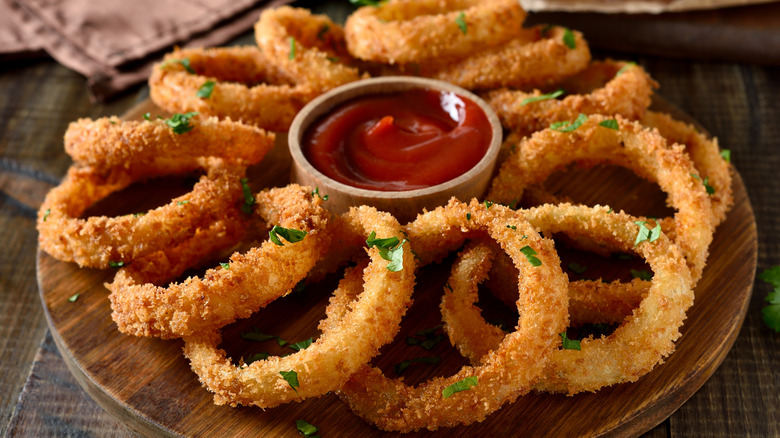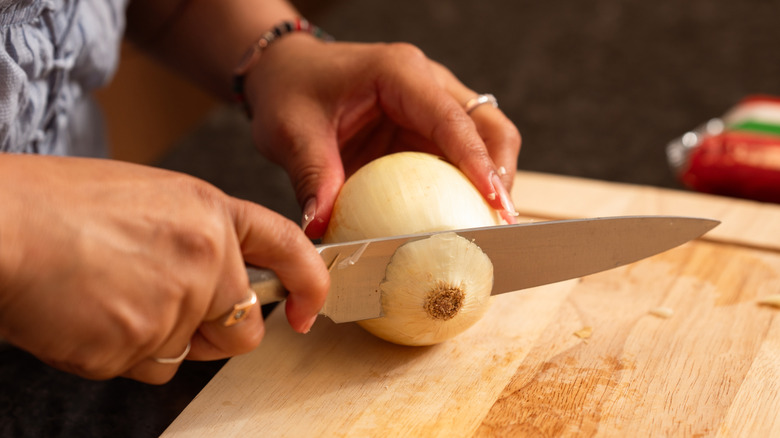How To Perfectly Cut Your Onion Rings
There's something special in the way an onion ring crumbles with every bite — the brittle shell giving way to a tender, sweet interior. But before the batter coats the surface and the oil works its magic, the foundation of crispy fried onion rings is built at the cutting board. The right onion, a trusty knife, and proper slicing all set the stage for an irresistible batch of this iconic appetizer.
For uniformly shaped, restaurant-worthy onion rings, a high-quality knife is non-negotiable. A dull blade crushes and shreds the onion, leaving ragged edges that release excess moisture — the enemy of crispness. On the other hand, a sharp, steady blade glides through the onion with minimal effort, preserving the natural form of the rings and keeping the layers intact.
When it comes to frying, not all onions are created equal. Large, firm onions with well-defined layers hold their structure best. For example, sweet onion varieties like Vidalia, Maui, Walla Walla, and Bermuda offer bold flavor and caramelize beautifully. Yellow onions provide a bit more zest and hold up well to high-heat frying. Keep in mind that if you opt for a red onion, its potent palate may be overpowering.
The key to onion rings is consistency
Start by trimming the ends of the onion — just enough to remove the root and stem without cutting too deeply into the layers. Then, slice the onion crosswise into uniform discs, aiming for ¼-inch to ½-inch thickness. This range strikes the ideal balance between thin enough to cook quickly and develop a crisp shell and thick enough to maintain a satisfying chew. If the rings are too thin, they'll turn fragile and limp. If they're too thick, they risk undercooking rather than becoming tender.
Once sliced, separate the rings gently, being mindful not to tear them. The thinner, more delicate layers can break if handled too forcefully. Since onions are about 90% water, excess liquid may prevent the breading from adhering. To ensure a crisp coating, pat the rings dry with a clean paper towel. For an extra insurance policy against slippage, dust the rings lightly with cornstarch or flour before dipping them in the batter. This step ensures that the coating stays in place and each onion ring fries up to golden perfection. If you prefer homemade baked onion rings, the same rules apply.

